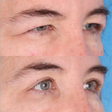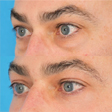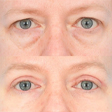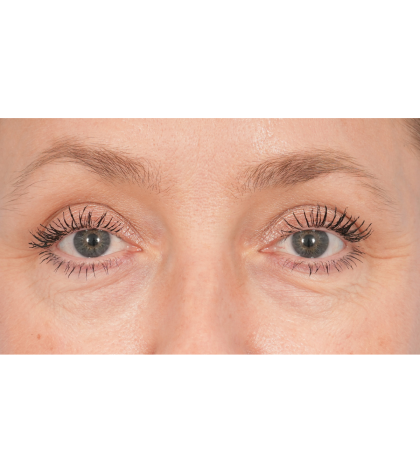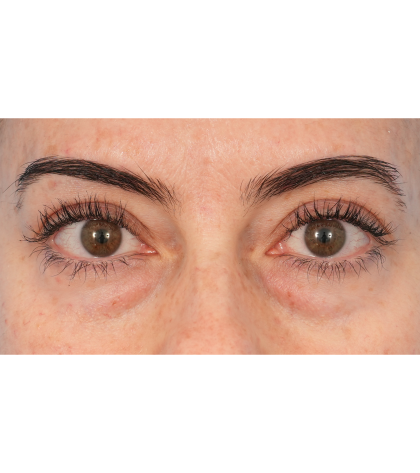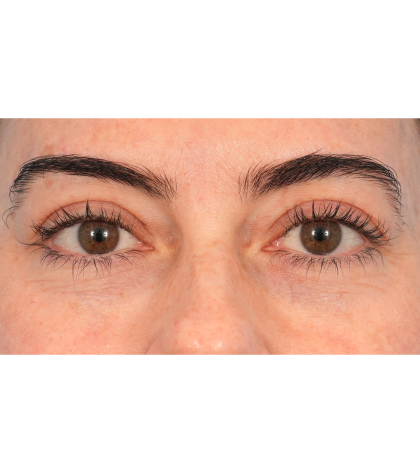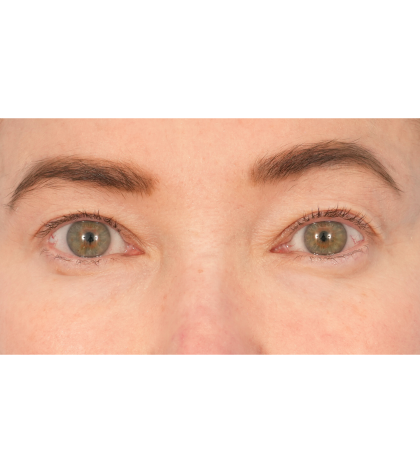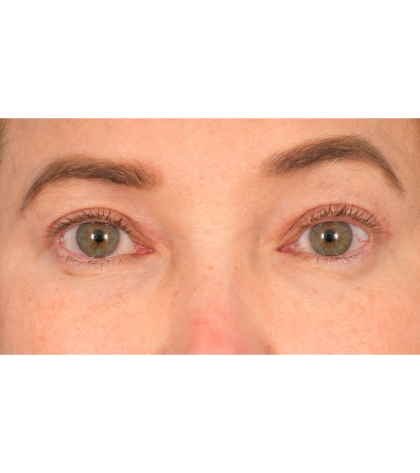Blepharoplasty
Conveniently located to serve the areas of Chicago, IL
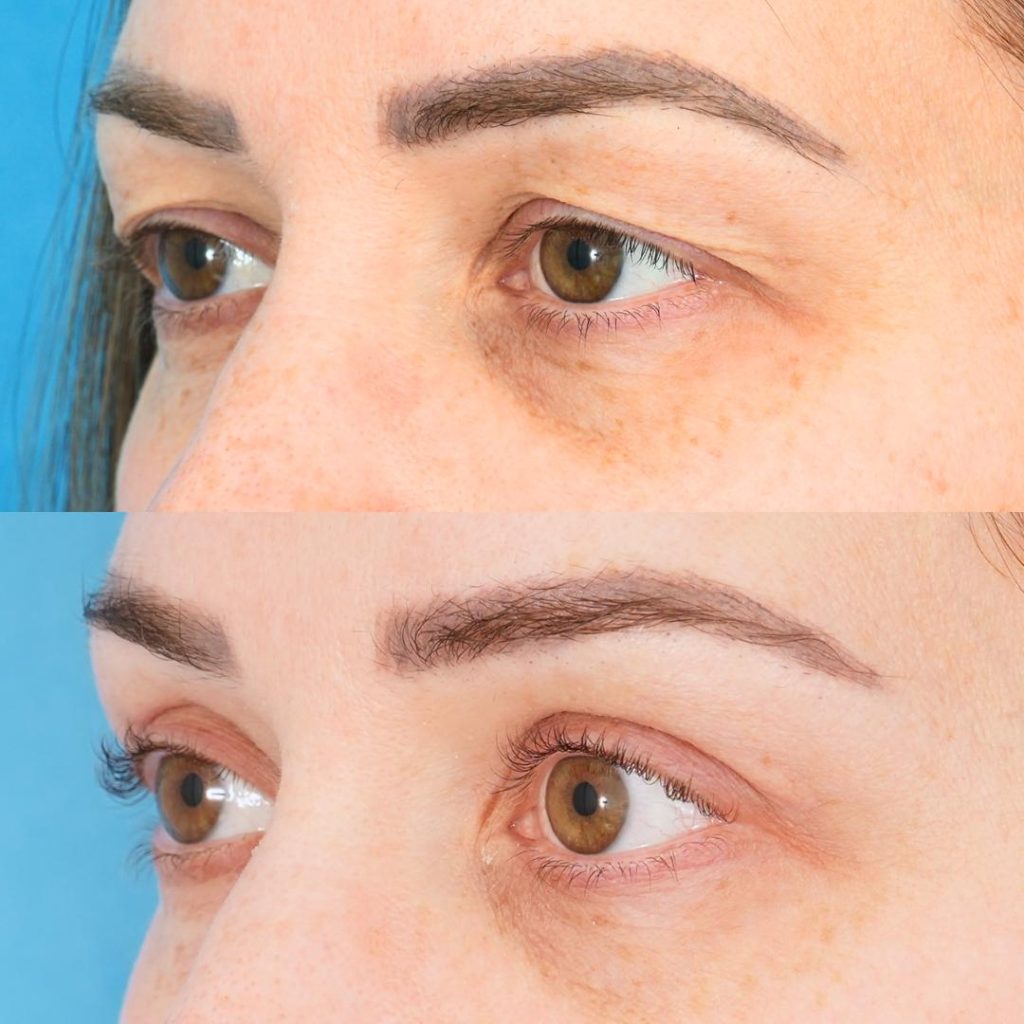
Blepharoplasty (ble-frow-plah-stee) is a surgical procedure that aims to rejuvenate the appearance of the eyes by correcting various aesthetic concerns related to the upper and/or lower eyelids. This procedure can address droopy or sagging eyelids, excess skin on the eyelids, puffy under-eye bags, and other conditions that can make the eyes appear tired or aged. With blepharoplasty, patients can achieve a more youthful and refreshed look.
Renowned oculofacial plastic surgeon Dr. Paul Phelps and the team at Chicago Oculofacial Plastic Surgery are dedicated to providing exceptional blepharoplasty procedures to their patients in Chicago and beyond. If you would like to schedule a personal consultation with Dr. Phelps to discuss your specific needs and goals, please contact our office at (312) 888-5754.
Contents
- 1 Before and After Photos
- 2 About Blepharoplasty
- 3 The History of Eyelid Surgery
- 4 Modern Blepharoplasty
- 5 Who is a Candidate for Eyelid Surgery?
- 6 Personal Consultation
- 7 Cost of Eyelid Surgery in Chicago
- 8 FAQ
- 8.1 What kind of anesthesia do surgeons use for eyelid lifts?
- 8.2 How long does eyelid surgery take?
- 8.3 How long do the results of eyelid surgery last?
- 8.4 Do I have to quit smoking if I want an eyelid lift?
- 8.5 Can I combine a brow lift with an eyelid lift?
- 8.6 Can an eyelid lift help me regain confidence in my appearance?
- 9 References
Before and After Photos
About Blepharoplasty
Blepharoplasty can be classified into several types based on the specific needs and goals of the patient:
- Upper Blepharoplasty: This procedure focuses on correcting sagging or drooping upper eyelids. The surgeon removes excess skin and fat, and the underlying muscles may be tightened to achieve a more refreshed and youthful appearance.
- Lower Blepharoplasty: Lower eyelid surgery targets the under-eye area, specifically addressing puffiness and bulging caused by fat deposits. The surgeon will make incisions either on the inside of the lower eyelid or below the lash line to remove or reposition fat and tighten the lower eyelid.
- Quad Blepharoplasty: Quad blepharoplasty is a comprehensive approach that combines both upper and lower eyelid surgery. This option is suitable for patients who require concurrent correction of drooping upper eyelids and under-eye bags.
The term “blepharoplasty” was first coined by Karl Ferdinand von Gräfe in 1818 and stems from the Greek words “blepharon” (eyelid) and “plastikos” (to shape), highlighting the goal of shaping the eyelids and enhancing their appearance. (1)
The History of Eyelid Surgery
Blepharoplasty has a fascinating history that spans centuries and reflects the evolution of surgical techniques and aesthetic ideals. From ancient civilizations to modern innovations, the history of blepharoplasty is a testament to the enduring pursuit of beauty and rejuvenation.
De Re Medica
De Re Medica is a Latin medical text attributed to the Roman author Aulus Cornelius Celsus, who lived during the 1st century BCE. While this early medical encyclopedia covers various medical topics, including surgery, it does not specifically mention eyelid surgery or blepharoplasty as we understand it today. However, the text does contain references to surgical procedures performed on the eyes and surrounding structures. For example, Celsus describes techniques for treating conditions such as “relaxed eyelids”, cataracts, trachoma (a bacterial eye infection), and injuries to the eyelids and eye sockets. (2) These treatments may have involved procedures to repair eyelid lacerations, remove foreign bodies, or address other traumatic injuries affecting the eyes.
The Tadhkirat
The writings of Ali ibn Isa (AD 940-1010) are thought to be some of the earliest documented records of eyelid surgery in the Arab world. His Tadhkirat is an important medieval Arabic medical text that provides insights into various surgical procedures, including eyelid surgery. In the Tadhkirat, Ali ibn Isa describes techniques for correcting eyelid abnormalities and deformities, such as ptosis (drooping eyelids) and entropion (inward-turning eyelids). (2)
The Early 19th Century
In the 19th century, there were significant advancements in eyelid surgery. It became increasingly recognized as a specialized field within plastic surgery. One of the key figures in the history of 19th-century blepharoplasty was Eduard Zeis, a German ophthalmologist and surgeon who made notable contributions to this area of medicine.
In 1832, Zeis published an important work known as Die Bildung Neuer Augenlieder, or “The Formation of New Eyelids”, in which he described surgical techniques for reconstructing the eyelids in cases of congenital absence, trauma, or disease.
The Advent of Anesthesia
Throughout the 19th century, surgeons continued to refine and develop blepharoplasty techniques, often drawing inspiration from advances in general surgery and ophthalmology. Anesthesia, introduced in the mid-19th century, revolutionized surgical practice and made it possible to perform more complex and extensive procedures on the eyelids and surrounding structures.
Additionally, in the latter half of the 19th century, plastic surgery emerged as a distinct surgical specialty, with practitioners focusing on the restoration and reconstruction of bodily defects caused by injury, disease, or congenital anomalies. Blepharoplasty became increasingly recognized as a valuable tool to enhance facial aesthetics and restore normal eyelid function.
The 20th Century
Frederick Kolle, an American surgeon who practiced in the late 19th and early 20th centuries, was known for his expertise in reconstructive and cosmetic surgery, particularly in the areas of facial aesthetics and oculoplastic surgery. One of Kolle’s notable contributions to eyelid surgery was his development of a technique for correcting ptosis (drooping eyelids) and restoring normal eyelid function. In his seminal work titled Plastic and Cosmetic Surgery published in 1911, Kolle described his approach to ptosis repair, which involved tightening the levator aponeurosis (the tendon that lifts the eyelid) and repositioning the eyelid margin to achieve a more youthful and symmetrical appearance.
Later in the 20th century, Mexican plastic surgeon Salvador Castañares made significant contributions to the field, particularly in the anatomical description of the orbital fat pads, the protrusion of intraorbital fat, and techniques to remove excess eyelid skin. (3)
Castañares is credited with popularizing the transconjunctival approach to lower blepharoplasty, which involves making incisions on the inside of the lower eyelid rather than on the external skin. This technique allows surgeons to access and remove excess fat pads and address other lower eyelid concerns without visible external scars.
Modern Blepharoplasty
Over the past 30 years, blepharoplasty has undergone significant advancements, driven by innovations in surgical techniques, technology, and patient safety. Some of the key advancements in blepharoplasty during this time include:
Minimally Invasive Techniques
The development of minimally invasive blepharoplasty techniques has revolutionized the field, allowing surgeons to achieve excellent results with smaller incisions, reduced trauma to tissues, and faster recovery times. Techniques such as transconjunctival blepharoplasty, which involves making incisions inside the lower eyelid, and laser-assisted blepharoplasty have become popular options for eyelid rejuvenation. (4)
Fat Repositioning and Preservation
Rather than simply removing excess skin and fat from the eyelids, modern blepharoplasty techniques often involve repositioning or redistributing fat to achieve a more natural and youthful appearance. Fat grafting and fat repositioning techniques allow surgeons to restore volume to hollowed areas and improve contour irregularities without the need for synthetic fillers.
Improved Safety and Outcomes
Advances in anesthesia, surgical instruments, and perioperative care have enhanced the safety and efficacy of blepharoplasty procedures. Techniques such as tumescent anesthesia, which involves injecting a diluted solution of local anesthetic and epinephrine to minimize bleeding and bruising, have made blepharoplasty safer and more comfortable for patients.
Combination Procedures
Many patients undergoing blepharoplasty may benefit from complementary procedures to address additional concerns, such as brow ptosis (drooping eyebrows), upper facial wrinkles, or lower facial laxity. Surgeons often perform blepharoplasty in conjunction with brow lift surgery, facelift surgery, or non-surgical treatments like Morpheus8 to achieve comprehensive facial rejuvenation.
Who is a Candidate for Eyelid Surgery?
Blepharoplasty is suitable for individuals who have one or more of the following concerns:
- Excess skin on the upper or lower eyelids that impairs vision or creates a heavy, tired appearance
- A poorly defined eyelid crease
- Eye bags or under-eye puffiness
- Fine lines or wrinkles in the eye area
- Ptosis (drooping) of the eyelids
Personal Consultation
During your consultation with Dr. Phelps, he will begin by understanding your specific concerns and aesthetic goals related to the eyelids and surrounding areas. As an expert in eyelid rejuvenation, Dr. Phelps will conduct a comprehensive examination of your upper and lower eyelids, considering factors such as the position of the eyebrows, the condition of your skin, muscle strength, and the presence of excess fat. This evaluation allows him to recommend the most suitable approach for optimal outcomes.
Cost of Eyelid Surgery in Chicago
Eyelid surgery is a highly individualized procedure, therefore the cost will reflect the nature of each patient’s treatment plan. During your personal consultation with Dr. Phelps, you will receive an accurate estimate tailored to your specific needs.
For more information about the eyelid lift procedure, and to schedule your consultation at Chicago Oculofacial Plastic Surgery, please call (312) 888-5754 or use our short online form for further details.
FAQ
What kind of anesthesia do surgeons use for eyelid lifts?
The type of anesthesia used during blepharoplasty depends on various factors including the extent of the procedure and the patient’s comfort level. General anesthesia, IV sedation, or local anesthesia with sedation may be employed to ensure a painless and comfortable experience.
How long does eyelid surgery take?
The duration of a blepharoplasty surgery can vary depending on the specific techniques used, the extent of the procedure, and whether it involves the upper eyelids, lower eyelids, or both (quad blepharoplasty). On average, the procedure typically takes around 1 to 2 hours to perform.
How long do the results of eyelid surgery last?
Blepharoplasty offers long-lasting results; however, the natural aging process will continue. The longevity of the surgical outcomes depends on various factors, including the patient’s age, genetics, and lifestyle choices. Generally, patients can enjoy the benefits of blepharoplasty for many years.
Do I have to quit smoking if I want an eyelid lift?
Patients who smoke or use nicotine products should quit prior to their blepharoplasty surgery, as smoking can impair the healing process.
Can I combine a brow lift with an eyelid lift?
Combining a brow lift with blepharoplasty is a common approach for patients who want comprehensive rejuvenation of the upper face. A brow lift addresses sagging brows and forehead wrinkles, while blepharoplasty improves the appearance of the eyelids. The combination of these procedures can create a more youthful and harmonious result.
Can an eyelid lift help me regain confidence in my appearance?
The positive changes achieved through blepharoplasty can have a profound impact on a patient’s self-esteem and self-image. Restoring a more vibrant and alert eye appearance often leads to increased confidence and psychological well-being as well as improved societal perceptions of youth, attractiveness, success, and health. (5)
References
- Subramanian N. Blepharoplasty. Indian Journal of Plastic Surgery : Official Publication of the Association of Plastic Surgeons of India. 2008;41(Suppl):S88-S92. https://www.ncbi.nlm.nih.gov/pmc/articles/PMC2825121/
- Fagien S. Putterman’s Cosmetic Oculoplastic Surgery E-Book. Elsevier Health Sciences; 2007.
- Espinoza GM, Holds JB. Evolution of Eyelid Surgery. Facial Plastic Surgery Clinics of North America. 2005;13(4):505-510. doi:https://doi.org/10.1016/j.fsc.2005.09.001
- Bonan P, Fusco I, Bruscino N, et al. Laser-assisted blepharoplasty: An innovative safe and effective technique. Skin research and technology: official journal of International Society for Bioengineering and the Skin (ISBS) [and] International Society for Digital Imaging of Skin (ISDIS) [and] International Society for Skin Imaging (ISSI). 2023;29(5):e13351. doi:https://doi.org/10.1111/srt.13351
- Bater KL, Ishii LE, Papel ID, et al. Association Between Facial Rejuvenation and Observer Ratings of Youth, Attractiveness, Success, and Health. JAMA Facial Plastic Surgery. 2017;19(5):360. doi:https://doi.org/10.1001/jamafacial.2017.0126
